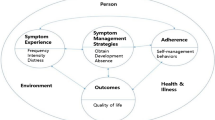Abstract
Adolescent and young adult (AYA) oncology patients experience many physical and psychological symptoms at the end of life (EOL); however, data on these experiences for AYA patients who have undergone hematopoietic cell transplantation (HCT) remains sparse. We sought to investigate the characteristics of AYA patients aged 15−25 years who received allogeneic HCT and subsequently died while inpatient at our institution between the years 2008 and 2014. A standardized data extraction tool was used to collect information about patient demographics, treatment and symptoms. We found that during this time frame, 34 AYA patients had received HCT and died while inpatient at our institution, 23 (68%) of whom died because of treatment-related complications. Compared with non-HCT AYA oncology patients (n=35), patients who received HCT (n=34) were more likely to have died in the intensive care unit (71% vs 23%, P<0 .0001) and to have received mechanical ventilation (68% vs 17%, P<0.0001) or hemodialysis (53% vs 0%, P<0.0001) in the last 30 days of life. These findings demonstrate that AYA patients who receive allogeneic HCT receive intensive EOL treatment, suggesting that these patients may benefit from early integration of expert interdisciplinary services to prospectively assess and manage distressing symptoms.
This is a preview of subscription content, access via your institution
Access options
Subscribe to this journal
Receive 12 print issues and online access
$259.00 per year
only $21.58 per issue
Buy this article
- Purchase on Springer Link
- Instant access to full article PDF
Prices may be subject to local taxes which are calculated during checkout

Similar content being viewed by others
References
National Cancer Institute: Adolescents and young adults with cancer. http://www.cancer.gov/types/aya2016.
Bleyer A . The adolescent and young adult gap in cancer care and outcome. Curr Probl Pediatr Adolesc Health Care 2005; 35: 182–217.
Zebrack B, Mathews-Bradshaw B, Siegel S, Alliance LYA . Quality cancer care for adolescents and young adults: a position statement. J Clin Oncol 2010; 28: 4862–4867.
Bleyer A . Young adult oncology: the patients and their survival challenges. CA Cancer J Clin 2007; 57: 242–255.
Tai E, Pollack LA, Townsend J, Li J, Steele CB, Richardson LC . Differences in non-Hodgkin lymphoma survival between young adults and children. Arch Pediatr Adolesc Med 2010; 164: 218–224.
Thomas DM, Seymour JF, O'Brien T, Sawyer SM, Ashley DM . Adolescent and young adult cancer: a revolution in evolution? Intern Med J 2006; 36: 302–307.
Snaman JM, Kaye EC, Lu JJ, Sykes A, Baker JN . Palliative care involvement is associated with less intensive end-of-life care in adolescent and young adult oncology patients. J Palliat Med 2017; 20: 509–516.
Mack JW, Chen K, Boscoe FP, Gesten FC, Roohan PJ, Schymura MJ et al. High intensity of end-of-life care among adolescent and young adult cancer patients in the New York State Medicaid Program. Med Care 2015; 53: 1018–1026.
Mack JW, Chen LH, Cannavale K, Sattayapiwat O, Cooper RM, Chao CR . End-of-life care intensity among adolescent and young adult patients with cancer in Kaiser Permanente Southern California. JAMA Oncol 2015; 1: 592–600.
Theunissen JM, Hoogerbrugge PM, van Achterberg T, Prins JB, Vernooij-Dassen MJ, van den Ende CH . Symptoms in the palliative phase of children with cancer. Pediatr Blood Cancer 2007; 49: 160–165.
Cohen-Gogo S, Marioni G, Laurent S, Gaspar N, Semeraro M, Gabolde M et al. End of life care in adolescents and young adults with cancer: experience of the adolescent unit of the Institut Gustave Roussy. Eur J Cancer 2011; 47: 2735–2741.
Wolfe J, Grier HE, Klar N, Levin SB, Ellenbogen JM, Salem-Schatz S et al. Symptoms and suffering at the end of life in children with cancer. N Engl J Med 2000; 342: 326–333.
Wein S, Pery S, Zer A . Role of palliative care in adolescent and young adult oncology. J Clin Oncol 2010; 28: 4819–4824.
Rosenberg AR, Dussel V, Kang T, Geyer JR, Gerhardt CA, Feudtner C et al. Psychological distress in parents of children with advanced cancer. JAMA Pediatr 2013; 167: 537–543.
Rosenberg AR, Baker KS, Syrjala K, Wolfe J . Systematic review of psychosocial morbidities among bereaved parents of children with cancer. Pediatr Blood Cancer 2012; 58: 503–512.
Kreicbergs U, Valdimarsdottir U, Onelov E, Bjork O, Steineck G, Henter JI . Care-related distress: a nationwide study of parents who lost their child to cancer. J Clin Oncol 2005; 23: 9162–9171.
Majhail NS, Farnia SH, Carpenter PA, Champlin RE, Crawford S, Marks DI et al. Indications for autologous and allogeneic hematopoietic cell transplantation: guidelines from the American Society for Blood and Marrow Transplantation. Biol Blood Marrow Transplant 2015; 21: 1863–1869.
Leung W, Ahn H, Rose SR, Phipps S, Smith T, Gan K et al. A prospective cohort study of late sequelae of pediatric allogeneic hematopoietic stem cell transplantation. Medicine 2007; 86: 215–224.
Munchel A, Chen A, Symons H . Emergent complications in the pediatric hematopoietic stem cell transplant patient. Clin Pediatr Emerg Med 2011; 12: 233–244.
Ullrich CK, Lehmann L, London WB, Guo D, Sridharan M, Koch R et al. End-of-life care patterns associated with pediatric palliative care among children who underwent hematopoietic stem cell transplant. Biol Blood Marrow Transplant 2016; 22: 1049–1055.
Ullrich CK, Dussel V, Hilden JM, Sheaffer JW, Lehmann L, Wolfe J . End-of-life experience of children undergoing stem cell transplantation for malignancy: parent and provider perspectives and patterns of care. Blood 2010; 115: 3879–3885.
Brock KE, Steineck A, Twist CJ . Trends in end-of-life care in pediatric hematology, oncology, and stem cell transplant patients. Pediatr Blood Cancer 2016; 63: 516–522.
Keim-Malpass J, Erickson JM, Malpass HC . End-of-life care characteristics for young adults with cancer who die in the hospital. J Palliat Med 2014; 17: 1359–1364.
Baker JN, Hinds PS, Spunt SL, Barfield RC, Allen C, Powell BC et al. Integration of palliative care practices into the ongoing care of children with cancer: individualized care planning and coordination. Pediatr Clin North Am 2008; 55: 223–250 xii.
Vern-Gross TZ, Lam CG, Graff Z, Singhal S, Levine DR, Gibson D et al. Patterns of end-of-life care in children with advanced solid tumor malignancies enrolled on a palliative care service. J Pain Symptom Manageme 2015; 50: 305–312.
Kelly D, Ross S, Gray B, Smith P . Death, dying and emotional labour: problematic dimensions of the bone marrow transplant nursing role? J Adv Nurs 2000; 32: 952–960.
Meert KL, Donaldson AE, Newth CJ, Harrison R, Berger J, Zimmerman J et al. Complicated grief and associated risk factors among parents following a child's death in the pediatric intensive care unit. Arch Pediatr Adolesc Med 2010; 164: 1045–1051.
Meert KL, Shear K, Newth CJ, Harrison R, Berger J, Zimmerman J et al. Follow-up study of complicated grief among parents eighteen months after a child's death in the pediatric intensive care unit. J Palliat Med 2011; 14: 207–214.
El-Jawahri A, LeBlanc T, VanDusen H, Traeger L, Greer JA, Pirl WF et al. Effect of inpatient palliative care on quality of life 2 weeks after hematopoietic stem cell transplantation: a randomized clinical trial. JAMA 2016; 316: 2094–2103.
Mack JW, Wolfe J . Early integration of pediatric palliative care: for some children, palliative care starts at diagnosis. Curr Opin Pediatr 2006; 18: 10–14.
Kaye EC, Friebert S, Baker JN . Early integration of palliative care for children with high-risk cancer and their families. Pediatr Blood Cancer 2015; 63: 593–597.
Smith TJ, Temin S, Alesi ER, Abernethy AP, Balboni TA, Basch EM et al. American Society of Clinical Oncology provisional clinical opinion: the integration of palliative care into standard oncology care. J Clin Oncol 2012; 30: 880–887.
Wolfe J, Orellana L, Ullrich C, Cook EF, Kang TI, Rosenberg A et al. Symptoms and distress in children with advanced cancer: prospective patient-reported outcomes from the PediQUEST Study. J Clin Oncol 2015; 33: 1928–1935.
Acknowledgements
We thank Deborah V Gibson for her work in creating the Excel spreadsheet for use as the data extraction form and Cherise Guess for her review and editing. This work was supported, in part, by ALSAC (American Lebanese Syrian Associated Charities).
Author information
Authors and Affiliations
Corresponding author
Ethics declarations
Competing interests
The authors declare no conflict of interest.
Additional information
Supplementary Information accompanies this paper on Bone Marrow Transplantation website
Supplementary information
Rights and permissions
About this article
Cite this article
Snaman, J., Talleur, A., Lu, J. et al. Treatment intensity and symptom burden in hospitalized adolescent and young adult hematopoietic cell transplant recipients at the end of life. Bone Marrow Transplant 53, 84–90 (2018). https://doi.org/10.1038/bmt.2017.187
Received:
Revised:
Accepted:
Published:
Issue Date:
DOI: https://doi.org/10.1038/bmt.2017.187
This article is cited by
-
Thoughts from the threshold: patient and family hopes, fears, values, and goals at the onset of pediatric hematopoietic cell transplantation
Bone Marrow Transplantation (2020)



